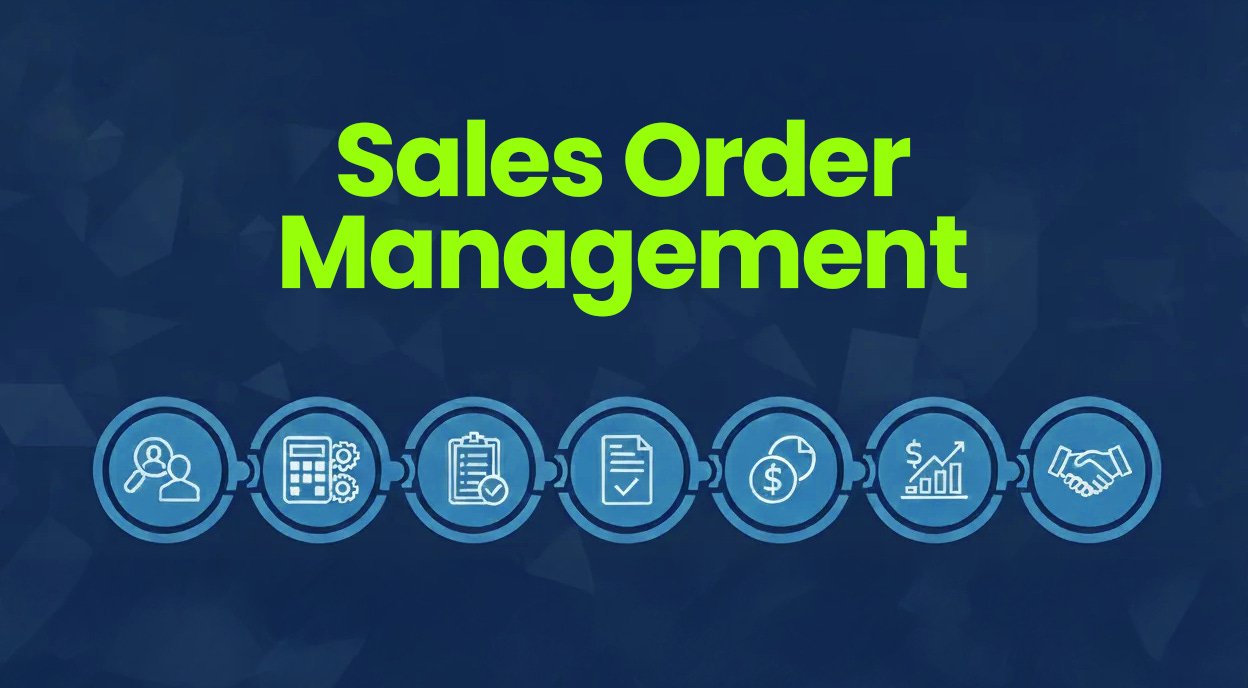Strengthen the Sales Order Management (SOM) Value Chain: From Sell to Service
Budgets are not gone. They are moving to initiatives that stabilize revenue flow and prove value fast. In manufacturing, the quickest way out of limbo is to strengthen the spine that runs from sell to service, then expand with evidence.
The manufacturing spine
Sell → Configure, Price, Quote (CPQ) → Agree → Orchestrate → Fulfill → Invoice → Service → Renew
Find the weak vertebra, fix it, measure the delta, move to the next.
Where to anchor first
1) Product catalog and pricing
Keywords: Product Catalog Management, Price Lists, Pricing Rules, Recommendations
Anchor here if SKUs and regional price workarounds create rework.
Outcome: cleaner quotes, fewer overrides, margin you can trust.
2) Configuration integrity
Keywords: CPQ, Configurator, Compatibility Rules, Visual Configuration
Anchor here if ETO or complex CTO bounces between sales and engineering.
Outcome: only buildable options are sold, change orders drop.
3) Quote and agreement discipline
Keywords: Quote Management, Document Generation, Sales Agreements
Anchor here if approvals stall or terms are free-form.
Outcome: faster cycle time, fewer downstream disputes.
4) Order management and orchestration
Keywords: Inventory, Qualification, Fallout, Orchestration, Order Management Portal, Transaction Manager
Anchor here if ATP or CTP promises miss and exceptions age in the dark.
Outcome: reliable promise dates, visible exceptions, shorter order cycles.
5) Order-to-cash and case ops
Keywords: Case Management for Order Ops and Invoice Ops
Anchor here if credit-rebills and “where is my order” cases spike.
Outcome: cleaner invoices, lower DSO, fewer disputes.
6) Contracts, entitlements, lifecycle
Keywords: Contracts Data Model, Entitlement Verification, Modify/Suspend/Resume/Renew
Anchor here if coverage is unclear and renewals are manual.
Outcome: higher renewal rates and service profitability.
7) Installed base and service
Keywords: Installed Base Management, Sold Product, Asset Management
Anchor here if first-time fix is low or parts planning is guesswork.
Outcome: proactive service, fewer truck rolls, happier customers.
Bundle vs debundle without the drama
Bundle when the link is core to revenue integrity and teams must share one data and permissions model
(CPQ ↔ Agreements ↔ Orders ↔ Billing ↔ Renewals).Debundle when a specialized tool clearly lifts a metric and integrates cleanly
(for example, visual configuration that feeds validated structures back into CPQ and ERP).
Ask: which choice lowers variance and shortens time to evidence for this vertebra.
An AI ladder that actually helps SOM
Assistive: draft pricing notes, flag margin risk, check BOM compatibility, summarize fallout (human decides).
Augmented: recommend price bands, option bundles, promise dates with confidence scores (human approves).
Autonomous: execute low-risk actions within guardrails, like routing exceptions or generating variant BOMs (human reviews).
Non-negotiables at every rung: governed data and observable impact.
Measure what proves flow
Pick a handful and publish weekly.
Sales velocity: request-to-quote, quote-to-close
Quality: quote and order error rate, change orders avoided
Delivery: ATP or CTP promise accuracy, exception age, on-time-in-full
Money: gross margin on configured deals, revenue leakage caught, DSO
Service: first-time fix, spare parts fill rate, renewal rate
How to sequence without politics
Three questions beat endless debates:
Criticality: is this link core to revenue integrity or customer trust
Differentiation: does it help you win complex deals or protect margin
Time to evidence: can you show movement in 60 to 90 days
Boardroom takeaway: Start with the spine. Strengthen the vertebra that is failing customers and the P&L, prove the improvement, then move to the next link. When the spine holds, decisions about platforms, pilots, and partners become obvious.


